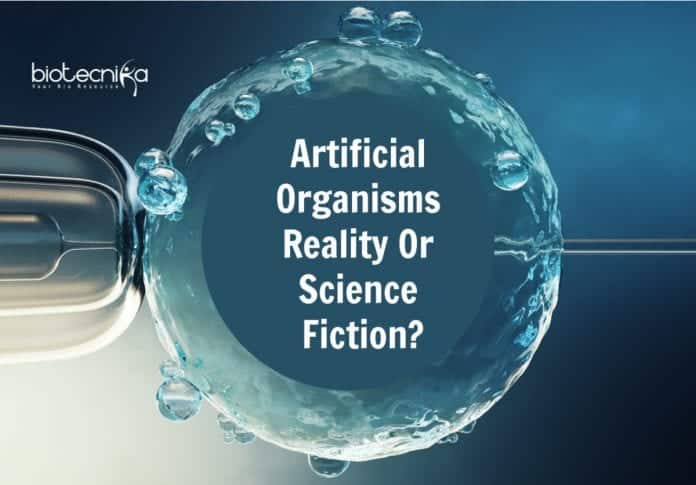Bioengineers are on the verge of developing artificial organisms that will pave the way for new applications in medicine and industry.
Every living being on this Earth has parents, grandparents, and an unbreakable ancestry running all the way back to the first organisms that lived billions of years ago. But this is going to change soon. We will have organisms on Earth that do not have any direct lineage or parents. Bacteria will be the first among such organisms.
Bioengineers will develop bacteria for various applications in agriculture, industry, and medicine using computers. They will develop artificial life forms by building bacterial genomes with the help of DNA synthesizers.
This is not about genetically modified organisms where individual genes have been altered using techniques like CRISPR for applications in crop breeding and biotechnology. This is about the organisms for which genomes are developed from scratch by bioengineers.
This could sound like science fiction, but such artificial life forms will soon be a reality. The technical and scientific requirements are ready for manufacturing these organisms.
Technological advances
For one thing, we can understand the benefits of many decades of molecular and system biology research. Nowadays, we understand the “blueprints of life” in great detail. Digital databases store 200,000 genome sequences from a wide range of organisms. By intelligently integrating or modifying known genetic functions, bioengineers can develop microorganisms with useful new features.
Just a few years ago, synthesizing whole genomes of microbes from scratch was an incredibly time-consuming and economically scary feat. Thanks to computer algorithms, genomes can be simplified today so that they can be easily produced. Due to technological advances, DNA synthesis methods have become more efficient. Bioengineers now have the ability to quickly and accurately print DNA molecules on a silicon chip.
Bioengineers will soon be able to use these technological advances in favor of drafting synthetic genomes, placing them into cell envelopes, and developing useful microorganisms.
Broad areas of application
Developing artificial organisms offer many opportunities – especially in the biotechnological manufacturing of therapeutic agents and in medicine. Let’s look at few examples.
vaccine production
Developing a vaccine against not just the seasonal flu but also for emerging disease outbreaks like the latest coronavirus outbreak is a race against time.
But a novel kind of vaccine can be developed using artificial bacteria. They can be manufactured in a way that they are harmless to the human body, but still carry fragments of pathogens on the surface. The human immune system can learn to identify and defend against pathogens from such artificial bacteria. This approach will be less expensive and significantly faster than conventional, expensive protein vaccines.
Production organisms
Artificial bacteria could be used as production organisms to manufacture active ingredients essential for the production of complex chemicals. Thus sustainable biotechnological manufacturing processes can replace the conventional chemical processes based on fossil fuels.
Diagnostics and therapy
Artificial bacteria can be manufactured in such a way that they can detect cancer cells in the human body and kill those cells by producing active substances. They can be useful in treating metabolic disorders by manufacturing important metabolites in the digestive tract of patients.
Agriculture
The major challenges in agriculture like sustainability, food security, and adjustment to climate change can be tackled using artificial soil microbes that produce crop fertilizers directly from nitrogen in the air and protect seedlings.
Regulation and discussion necessary
Besides the great applications, there is a chance that the new technology of developing artificial organisms to be misused. Scientists should study the extent of the impact of the new technology and approach it with responsibility and foresight. The existing national and international regulations concerning the manufacture and trade of synthetic DNA must be revised and expanded. The ultimate aim of the technology should be for the benefit of society, keeping the risk of misuse to a minimum.
































